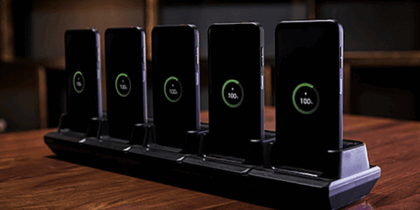The U.S. Federal Government continues to be a major target for hackers. The government acknowledged this fact, with the U.S. Senate’s Committee on Homeland Security and Government Affairs penning a follow-up report whose title says it all: Federal Cybersecurity: America’s Data Still at Risk1. The report details multiple federal data breaches, including the SolarWinds government data breach executed by the Russian Foreign Intelligence Service and a Chinese hack using a vulnerability in Pulse Connect Secure. As the government report points out, “seven agencies still fail at effectively securing data.” The authors agree that rooting these attacks out quickly and responding to them are crucial to our national security.
One important element in any federal security strategy is the use of solid state drives (SSDs) with dynamic random-access memory (DRAM).
DRAM gets the job done
DRAM SSD is a storage solution that’s designed to securely store data by encrypting it automatically and erasing it entirely when necessary. Encrypted data uses a lock and a key, so only someone in possession of the virtual key can gain access to the data.
Samsung SSDs, including the 870 QVO, are well suited to government use because they feature hardware-based encryption, with encryption keys built right into the drive controller rather than its system memory. As data is written to the drive, the self-encrypting Samsung SSDs automatically protect it. That means there’s no chance of a user forgetting to manually encrypt data.
This function is drastically different from traditional spinning hard disk drives (HDDs), which use software encryption via the system’s central processing unit (CPU) or a vendor’s SSDs. Software-based encryption simply isn’t as good for government use because the encryption process happens within the software layer. Anyone who breaks into the system can intercept the data and potentially hack the encryption key. Meanwhile, a hardware-based encryption uses its own processor and is isolated from the rest of the drives and resources on the machine. It provides pre-boot data protection and is always on and always working, meeting compliance regulations. Software-based encryption typically needs user input to get it started and therefore, isn’t as secure.
How over-provisioning SSDs impacts performance
Get your free white paper on how over-provisioning of SSDs can improve memory performance. Download Now
More importantly, there is the ability to erase data from an SSD securely. Unless you completely wipe a drive, the data is simply there waiting for someone to get in and take it. This reality is already troublesome for organizations across all verticals, but in the public sector a data breach could mean the identities and personally identifiable information of millions of Americans. Both 870 QVO ships with Samsung Magician software that features Secure Erase and Data Security to reduce this risk. The software enables users to monitor drive health, perform benchmarking and optimization, and customize their SSDs. It also provides the instant ability to delete sensitive data permanently without compromising the functionality of the SSD.
Choosing the right drive to fit your needs
Of course, security isn’t the only agency consideration when it comes to storage. Speed and capacity have also become increasingly important. Whether an agency is using its SSDs to power high-level analytics or run highly confidential applications, having a fast drive is key. In fact, there are some applications that cannot run on slower drives without the performance suffering significantly. This means users spend their time waiting for data and applications to respond rather than performing tasks that would better serve the American public. Unfortunately, this increasing need for speed and capacity typically requires more power as well — and, in the past, more budget spending.
It doesn’t have to be this way. Samsung’s current DRAM offerings provide higher capacities and speeds. The 870 QVO is available in 1TB, 2TB, 4TB and 8TB capacities and features read/write speeds of 530MB/s and 560MB/s.
Both drives gain performance improvements via the Samsung Magician software. The newest version, Magician 7, even lets users set preferences and manage their Samsung SSD’s performance, power usage, capacity, health, security capabilities and more via a newly enhanced dashboard. For example, users can put their drives into Power Saving mode for increased power efficiency.
If you want to learn more about how DRAM drives support government security efforts, check out this article here. Find out how Samsung SSDs solve government challenges in this free white paper.
1 Senate Committee on Homeland Security and Governmental Affairs. “Staff Report: Federal Cybersecurity: America’s Data Still at Risk.” August 2021. Unclassified









